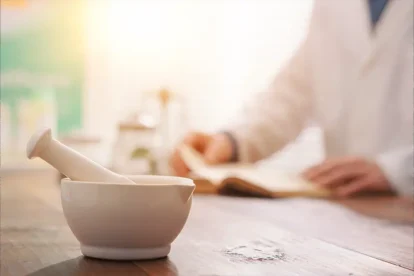Finding Freedom, Mind and Body: Pain Management During Addiction Treatment

Pain management during addiction treatment presents unique challenges for people struggling with opioid addiction due to chronic pain, but you do have options. Non-opioid pain medications, methadone and buprenorphine, psychotherapeutic and holistic therapies, and structured opioid therapy can all be used to help you find freedom from suffering.
As the tides have turned in how we understand drug addiction—away from the vilifying lens of choice and character flaw and toward a more accurate framing of addiction as self-medication—we have developed a new language for how we speak about addicts—a kinder, more realistic, and more productive language. The self-medication model has “the advantage of the disease model, in absolving the addict of excess blame, but it has the additional advantage of avoiding the stigma of ‘disease’ and all that goes with it,” says Dr. Marc Lewis, author of Memoirs of An Addicted Brain. “In fact, it gives control (agency) back to the addict, who is, after all, acting as his or her own physician.” Is it any wonder, then, that this has become perhaps the most prevalent narrative of addiction circulating in the recovery community today?
But self-medication doesn’t tell the whole story. Indeed, it leaves out a swelling group of addicts whose addiction does not stem from deep-rooted psychological distress, trauma, or mental health disorders—addicts whose addiction grew out of physician-directed opioid treatment for chronic physical pain. Countless opioid addicts can directly trace their addiction back to a single prescription written in the bright light of their doctor’s office, far away from the secretive alleys many imagine set the stage for opioid use to begin.
Addiction as self-medication and addiction as the result of legitimate medication for chronic pain can look interchangeable, and treatment for the addiction portion of the equation follow similar paths. However, while addiction treatment providers now typically seek to uncover and heal underlying psychiatric pain as a standard part of the recovery process, they may fail to recognize the very real, ongoing need to treat chronic physical pain and even regard the desire for pain relief as drug-seeking behavior. As a result, many opioid addicts are put in an agonizing position—heal from addiction and suffer physically, or stay in active addiction and escape bodily suffering.
If you are struggling with opioid addiction as the result of chronic pain treatment, it is imperative that you seek out treatment providers with the ability to offer meaningful pain management during addiction treatment. The paths to healing are numerous, and with the right treatment plan, you can learn to manage both your substance addiction and your pain in a way that is effective for you.
Non-Opioid Pain Medication
The first avenue often explored for those suffering from opioid addiction and chronic pain involves non-opioid medications, which can offer safe, effective pain relief without risk of addiction. While some of these medications are simply non-opioid pain relievers such as NSAIDs, they may also include off-label use of antidepressants and anticonvulsants. According to the Mayo Clinic, “Some of the more effective and commonly used medications for chronic pain are drugs that were developed to treat other conditions.” Antidepressants in particular are considered a “mainstay in the treatment of many chronic conditions, even when depression isn’t recognized as a factor.” Although the exact pain-relieving mechanism of antidepressants isn’t fully understood, experts believe that they may alter neurotransmitter activity to reduce pain signals.
Although many people experience significant pain relief through the use of antidepressants, the effects are not instant. Unlike opioids or NSAIDs, it can take several weeks to see the full effects of these medications.
Begin Your Recovery Journey Today
866-922-1350Methadone or Buprenorphine Treatment
Methadone and buprenorphine can be used with great success as relapse prevention medications,and are an integral part of treatment for many struggling with opioid addiction regardless of genesis. However, these medications can also provide pain relief benefits without the risks attendant to prescription opioid painkillers, and buprenorphine in particular is currently in use for chronic pain management even in non-addicted patients. As Dr. Lucinda Grande, a family physician who specializes in chronic pain and addiction medicine, writes,
Buprenorphine is often, in my experience, like a magical key that frees people from their seemingly inescapable dungeon. It is an opioid pain medication with a unique profile that fits the lock precisely. It blocks withdrawal symptoms and craving. There is no drug ‘high.’ Patients trade sluggishness for a fresh energy. Best of all, the hovering risk of overdose death vanishes.
While these medications can provide great relief for many, you must be continuously monitored for the duration of your treatment, making them impractical for some.
Psychotherapeutic and Holistic Approaches
As the dangers of mass opioid prescription have become undeniable, there has been a surge of interest in non-medication based chronic pain intervention. From individual psychotherapy to yoga, acupuncture to mindful meditation, a range of psychotherapeutic and holistic practices have shown various degrees of promise in the treatment of chronic pain for both addicted and not addicted patients. A study published last year in Addiction found that pairing behavioral and social support through group meetings significantly helped opioid-addicted veterans suffering from chronic pain by applying “techniques that help patients adapt to pain, distract from pain, and conceive techniques to function concurrently with pain.” Although the group met only for a total of 10 weeks, the effects lasted significantly longer—approximately one year.
While it is not known exactly why most of these approaches work, Dr. Sean Mackey, Chief of the Pain Management Division at Stanford University, believes that a large part of it is in the emotional and behavioral changes promoted by these therapies. “Many treatments we use in substance abuse overlap with chronic pain treatment—the psychological and behavioral skills are the same,” he explains. By developing meaningful coping skills, you can potentially learn to manage your pain both practically and emotionally, diminishing its damaging impact on your life and your need for other types of treatment.
Hope is Just a Phone Call Away
866-922-1350Structured Opioid Therapy
Ideally, you would be able to walk away from the substance of addiction and never turn back. However, with some types of addictions abstinence-based recovery is simply not possible—food addiction, sex addiction, and, yes, sometimes opioid addiction. There are some forms of pain that do not respond fully to non-opioid treatments or even to methadone and buprenorphine, making an abstinence-based approach both inhumane and dangerous, as your pain may spur you toward illicit drug use in an attempt to find relief. In these cases, your overall quality of life, drug-use history, and stage of recovery and must be carefully considered to determine if you are a candidate for structured opioid therapy.
Structured opioid therapy is “the use of opioids (other than methadone or burprenorphine) to treat chronic non-cancer pain, including patient education, a written treatment agreement, agreed-on dispensing intervals, and frequent monitoring.” In these cases, patients who are not currently using other drugs may be prescribed opioid painkillers—preferably one that is different from the drug of addiction—under strict supervision and in tightly controlled dosages. This form of treatment is generally considered a last resort for those recovering from opioid addiction, as it carries a significant relapse risk and may require extensive oversight in the form of regular urine drug screening, pill and patch counts, and ongoing effectiveness evaluations. However, when used in concert with a variety of other supports, structured opioid therapy can be a promising option. Says Dr. Mackey,
While even the most careful clinical pain management cannot eliminate risk of opioid misuse in patients with a history of addiction, good communication, knowledge of non-opioid treatment alternatives and appropriate monitoring and care in structuring opioid management can reduce risk significantly.
Toward Healing, Mind and Body
The most successful addiction treatment programs recognize the unique challenges faced by opioid addicts who struggle with chronic pain and design multifaceted plans to implement pain management during addiction treatment in a way that addresses the full scope of your needs. This means working with addiction specialists with experience managing chronic pain conditions in a manner that is effective and minimizes risk as you seek to create freedom from addiction. By creating meaningful emotional and behavioral change while alleviating physical pain, these programs can set the stage for both the end of drug abuse and the beginning of responsible management of pain.
Your treatment team must also partner with your outpatient healthcare providers to ensure that you are able to continue your treatment plan after your time in residential care. For many, this means connecting with new treatment providers who have the expertise necessary to provide ongoing monitoring of both your addiction and your chronic pain treatment to ensure you stay healthy, safe, and supported in your recovery. You may also wish to connect to specialized addiction and chronic pain support groups to find a community of peers who understand what you are going through.
Your choice is not between sobriety and suffering or addiction and pain relief. Your choice is between prolonging the damage of drug abuse and healing yourself, mind and your body, to create lasting tranquility.
Alta Mira offers a comprehensive suite of treatment programs for those struggling with drug addiction as well as co-occurring mental health disorders and process addictions. Contact us to learn more about our innovative services and how we can help you or your loved one start on the path to recovery.






